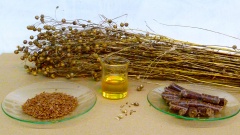Difference between revisions of "Linseed oil"
(Created page with "{{Infobox_Miscellaneous | image = Linseed_oil.JPG | origin = | stowage factor = | humidity and m...") |
|||
| Line 1: | Line 1: | ||
{{Infobox_Miscellaneous | {{Infobox_Miscellaneous | ||
| image = Linseed_oil.JPG | | image = Linseed_oil.JPG | ||
| − | | origin = | + | | origin = - |
| − | | stowage factor = | + | | stowage factor = 1,72 m<sup>3</sup>/t (in drums) |
| − | | humidity and moisture = | + | | humidity and moisture = - |
| − | | ventilation = | + | | ventilation = - |
| − | | risk factors = | + | | risk factors = See text |
}} | }} | ||
| + | ====Description / Application== | ||
| + | [[Linseed]] oil, also known as [[flaxseed]] oil, is a colourless to yellowish oil obtained from the dried ripe [[seeds]] of the [[flax]] plant. The oil is obtained by pressing, sometimes followed by solvent extraction. Due to its high levels of α-Linolenic acid (a particular form of omega-3 fatty acid), it is used as a nutritional supplement.<br><br> | ||
| + | [[Linseed]] oil is a drying oil, meaning it can polymerize into a solid form. Due to its polymer-forming properties, linseed oil is used on its own or blended with other oils, resins, and solvents as an impregnator and varnish in wood finishing, as a pigment binder in oil [[paints]], as a plasticizer and hardener in putty, and in the manufacture of [[linoleum]]. Linseed oil use has declined over the past several decades with increased availability of synthetic alkyd resins—which function similarly but resist yellowing.<br><br> | ||
| + | Linseed oil is an edible oil marketed as a nutritional supplement. In parts of Europe, it is traditionally eaten with [[potatoes]] and quark ([[cheese]]). It is regarded as a delicacy due to its hearty taste, which spices the bland quark.<br><br> | ||
| + | See [[Bulk Oils and Fats]] | ||
Revision as of 10:03, 6 August 2013
| Infobox on Linseed oil | |
|---|---|
| Example of Linseed oil |  |
| Facts | |
| Origin | - |
| Stowage factor (in m3/t) | 1,72 m3/t (in drums) |
| Humidity / moisture | - |
| Ventilation | - |
| Risk factors | See text |
Linseed oil
==Description / Application
Linseed oil, also known as flaxseed oil, is a colourless to yellowish oil obtained from the dried ripe seeds of the flax plant. The oil is obtained by pressing, sometimes followed by solvent extraction. Due to its high levels of α-Linolenic acid (a particular form of omega-3 fatty acid), it is used as a nutritional supplement.
Linseed oil is a drying oil, meaning it can polymerize into a solid form. Due to its polymer-forming properties, linseed oil is used on its own or blended with other oils, resins, and solvents as an impregnator and varnish in wood finishing, as a pigment binder in oil paints, as a plasticizer and hardener in putty, and in the manufacture of linoleum. Linseed oil use has declined over the past several decades with increased availability of synthetic alkyd resins—which function similarly but resist yellowing.
Linseed oil is an edible oil marketed as a nutritional supplement. In parts of Europe, it is traditionally eaten with potatoes and quark (cheese). It is regarded as a delicacy due to its hearty taste, which spices the bland quark.
See Bulk Oils and Fats











